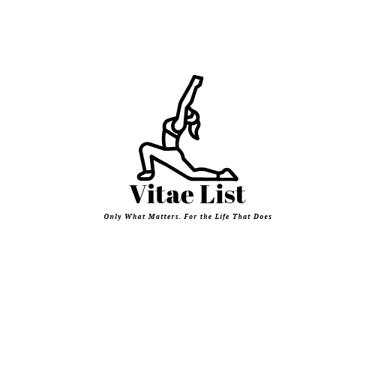How to Use a Fitness Tracker to Improve Sleep and Stress
Learn how to get more from your fitness tracker than just step counts. This guide explores how wearable tech can provide valuable insights into your sleep quality, stress levels, and overall recovery—so you can make informed lifestyle changes that actually support your health goals.
WELLNESSFITNESS GEAR
Vitae List
6/5/20252 min read


How to Use a Fitness Tracker to Improve Sleep and Stress
Affiliate Disclaimer: This post may contain affiliate links. As an Amazon Associate, we earn from qualifying purchases. This helps support our content creation at no extra cost to you.
Introduction: More Than Just Steps
Most people buy a fitness tracker to count steps, monitor workouts, or track calories. But what many overlook is one of the most valuable features these devices offer: insights into sleep and stress. From heart rate variability to REM cycle tracking, wearable tech has evolved to help you better understand your body’s recovery and resilience. Here's how to make the most of it.
1. Understanding Sleep Metrics
Modern fitness trackers like the Fitbit Versa 4, Oura Ring, and Whoop Band monitor several stages of sleep, including:
Light Sleep: Your entry into the sleep cycle.
Deep Sleep: Crucial for physical recovery.
REM Sleep: Where memory consolidation and cognitive recovery happen.
These trackers use data such as heart rate, motion, and skin temperature to estimate your sleep stages. By reviewing your trends, you can identify patterns or disruptions that affect recovery and mood.
✅ Try: [Fitbit Versa 4] https://amzn.to/4kLH2dg
📌 Feature Highlight: Sleep Score + Smart Wake to help improve morning alertness.
2. Heart Rate Variability and Stress
Heart Rate Variability (HRV) is a powerful indicator of your body’s stress response. A higher HRV generally means your body is resilient and well-recovered. A lower HRV can indicate stress, fatigue, or overtraining.
Wearables like WHOOP and Garmin track HRV in real time, giving you actionable insights into your stress levels. Daily HRV tracking allows you to:
Adjust workout intensity
Recognize early signs of burnout
Implement recovery strategies (breathwork, rest days, etc.)
✅ Try: [WHOOP Strap 4.0] https://amzn.to/3HASzxz
📌 Feature Highlight: Real-time recovery scores and personalized coaching.
3. Stress Management Features
Some trackers now include mindfulness and guided breathing sessions, daily stress scores, and real-time alerts when your stress levels spike.
Apple Watch: Offers breathwork reminders and stress detection.
Garmin Vivosmart: Provides daily stress tracking with suggestions to relax.
Fitbit Versa 2: Offers guided breathing exercises based on heart rate.
Implementing these tools daily can:
Improve focus and mental clarity
Reduce cortisol levels
Help establish healthier routines
✅ Try: [Garmin Vivosmart 5] https://amzn.to/4jp7DM1
📌 Feature Highlight: Stress tracking with built-in relaxation timer.
4. Using the Data to Improve Recovery
Raw data only helps if you use it to make informed changes:
Shift your bedtime earlier if you’re consistently sleep-deprived.
Reduce training load if HRV is low.
Prioritize recovery tools like cold exposure, massage, or supplements on high-stress days.
Pair your tracker with lifestyle upgrades to get real results.
5. Pairing Fitness Trackers with Wellness Habits
The real magic happens when you combine wearable data with:
Mindful breathwork and meditation
Journaling and mood tracking
Smart supplementation (e.g., magnesium for better sleep)
Regular exercise and stretching
Let your tracker be a guide, not a drill sergeant. The goal is awareness, not obsession.
Conclusion: Better Tech, Better You
Fitness trackers have become powerful tools for optimizing recovery and well-being. By understanding your sleep patterns, tracking stress, and integrating the data into actionable routines, you can take better control of your health. Whether you're a high performer or just looking to feel better daily, a wearable may be the smartest investment you make.
